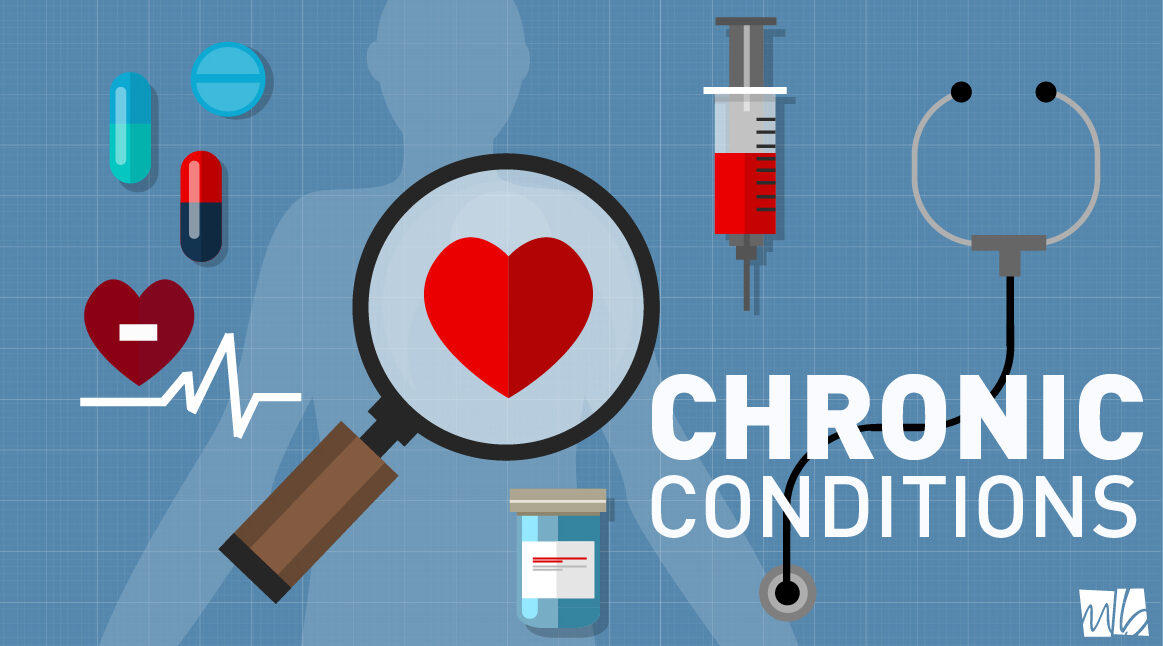In today’s workforce, chronic conditions are not just a health concern—they’re a business risk. Chronic diseases are the primary contributors to healthcare costs and mortality in the United States, affecting a large and growing portion of the population. These conditions are often preventable or manageable via lifestyle changes, but continue to impose significant health and economic burdens. Chronic diseases can quietly erode productivity, inflate healthcare costs, and challenge even the most robust benefits strategies.
The Financial Toll: Direct and Indirect Costs
Chronic diseases such as heart disease, diabetes, and cancer account for up to 90% of total healthcare spending in the U.S., according to the CDC 1 For employers, this translates into two major cost categories:
- Direct Medical Costs: Costs include doctor visits, hospitalizations, medications, and ongoing treatments. The CDC reports diabetes alone cost the U.S. $413 billion in 20221. These conditions not only drive-up claims but also increase pharmacy costs—especially with the rise of expensive specialty drugs like GLP-1s. As the number of chronic conditions per member increases, so does the risk of hospitalization, complications of their co-morbidities, and poor day-to-day functioning.1
- Indirect Costs: These costs include lost productivity from absenteeism and disability. A recent report estimated that four chronic conditions—high blood pressure, smoking, diabetes, and obesity—cost U.S. employers $36.4 billion annually in absenteeism.1
Prevalence: Chronic Conditions are Everywhere and Many are at Risk
More than 60% of Americans have at least one chronic condition, with 40% having two or more, and prevalence increases with age, reaching 93% in adults 65 and older. Children’s chronic condition rates have also risen over time.
Lifestyle increases Risk – Major lifestyle risk factors of chronic conditions include smoking, excessive sodium intake, poor nutrition, physical inactivity, and excessive alcohol consumption. Nearly half of all adults have at least one risk factor.
Mental Health: The Overlooked Multiplier
Mental health conditions are often a secondary condition along with chronic diseases—and they significantly amplify costs. According to a 2025 study in the Journal of Mental Health and Clinical Psychology, members with mental health condition and chronic conditions had a 64% higher cumulative cost per member than those without mental health conditions. Depression and anxiety are among the top drivers, often exacerbating conditions like diabetes and cardiovascular disease.
Preventive Care: The Strategic Lever
Preventive care is one of the most effective ways to reduce chronic disease burden and associated costs. Yet, compliance remains a challenge. So, what can employers do?
- Invest in Preventive Care: An annual exam with blood work from a Primary Care Provider and getting recommended age/gender screenings can catch conditions early. Yet, compliance remains a challenge—only 59% of employees and 56% of spouses in our MB Book of Business are meeting overall preventive care benchmarks. Making this a requirement with premium differentials can impact compliance.
- Close Gaps in Care: Our analytics show that closing gaps in care in both preventive care and chronic condition care improves outcomes and reduces costs. Annual exams with biometrics and age/gender screenings can uncover undiagnosed conditions by catching them early and thereby reducing costs. Appropriately managing chronic conditions keeps the condition in check. Both reduce the risk of future high-cost claimants.
- Employee Assistance Programs: Employee Assistance Programs (EAPs) are a powerful yet underutilized tool for supporting mental health in the workplace. Programs like CuraLinc have redefined EAPs with human-centric, tech-enabled models that normalize mental health care and increase utilization. A 2022 study published in SAGE Open found that employees who used EAP services reported:
- Improved life satisfaction
- Reduced anxiety and depressive symptoms
- Increased work productivity
- Coordinate Care for High-Risk Members: High-cost claimants often have multiple chronic conditions. Coordinated care management, typically through the insurance carriers, can help to ensure those members are receiving the right care from the right providers at the right facilities that provide high quality care.
- Use Data-Driven Insights: McGohan Brabender’s Health Intelligence Reports, powered by Springbuk, help identify trends, stratify risk, and guide interventions. This allows employers to shift from reactive to proactive health management.
The Bottom Line
Chronic and mental health conditions are not just healthcare issues—they’re a business risk. But with the right data, strategy, and a culture of prevention, employers can turn this challenge into an opportunity to reduce costs, improve outcomes, and foster a healthier, more productive workforce.
1 CDC https://www.cdc.gov/chronic-disease/data-research/facts-stats/index.html
2 Impact of Mental Health on chronic conditions and cost implications- Leveraging data to predict risk Manu S Bala2*, Nisha Dhanabalsamy2,3, Bill Lucia1
Written by: Kelly McCall, Manager Health Intelligence Analytics

